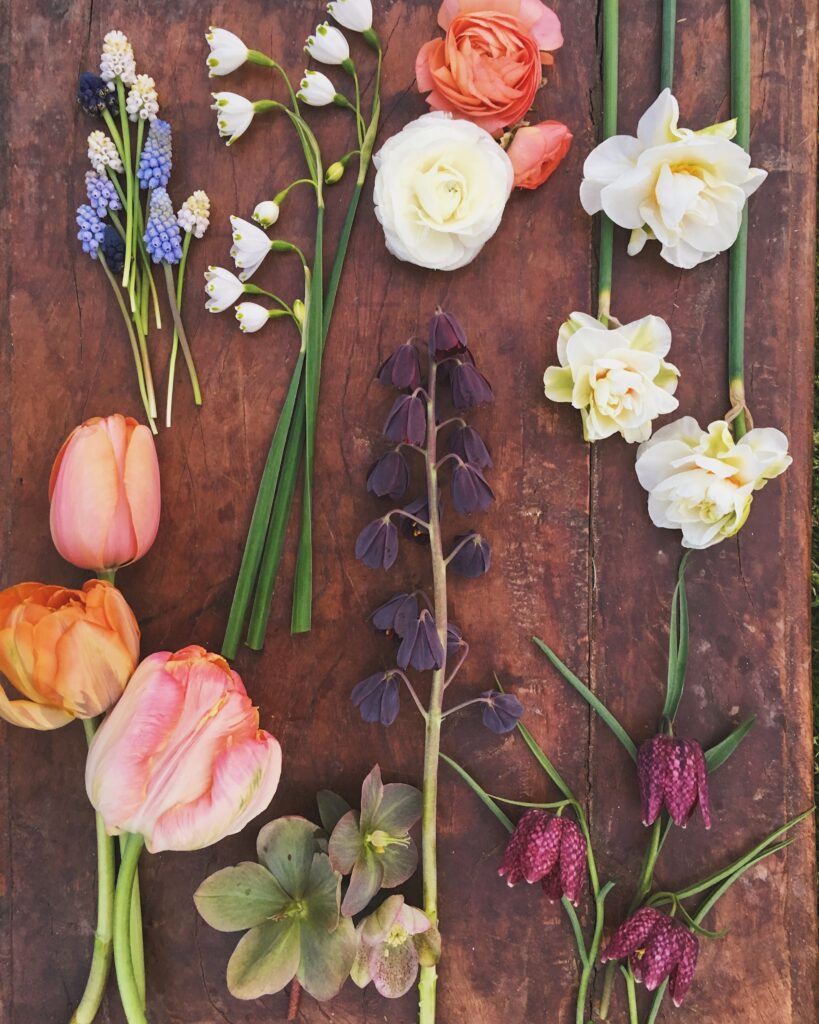Early spring blooms are perhaps the most precious, save for those frost survivors in late fall that we clutch to our breasts, begging them not to go (lookin’ at you, dahlias). Certainly, early spring blooms are the most romantic. The ruffles of ranunculus and the gauzy petals of poppies downright ooze feminine grace and soft romance.
When you first start designing with locally-grown blooms, it can take some time to learn the cast of characters that comes with each chapter in the seasons. Our Bloom Forecasts are here to help introduce you to all the abundant options you’ll see available through PFG, many of which are not readily available elsewhere!
Below are the early spring blooms you’ll see as our growers’ fields wake up from their winter hibernation. These stems are available in our region from late March, throughout April and possibly into early May.
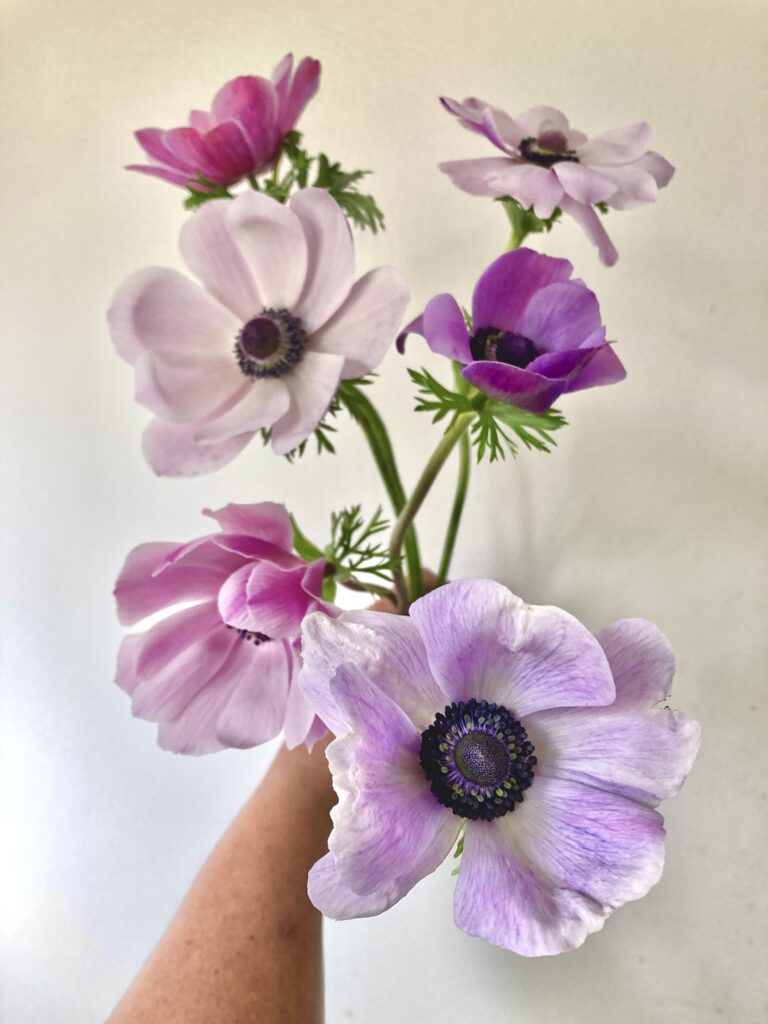
ANEMONE
Such a happy face that makes a great focal flower for just about any design. Fun fact about anemones is that they grow in the vase! So when designing with them, tuck them in a little lower so they can grow an inch or so to the spot you visualize. They also open and close each day. In a dark cooler or room, they will close up. In a sun-filled warm room, they’ll open wide quickly. Anemones come in white with a black eye (called pandas), white with a green eye, and then all shades of pinks, purples, reds, and bordering on blue. Anemones have about a 6-7 day vase life and store well for much longer in the cooler.
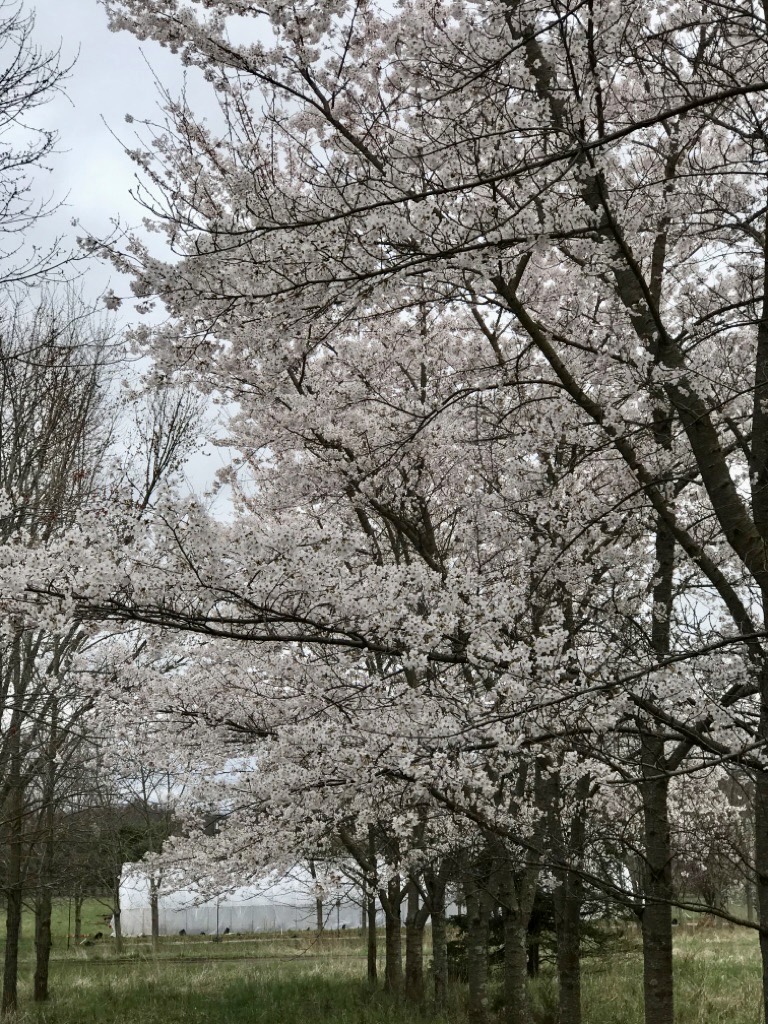
CHERRY
A classic flowering branch for spring, cherry is perfect for all your wedding arches and chuppahs! Branches are harvested in closed bud so be sure to order a week in advance of your event so you’ll have time to coax them into opening right on cue for the big reveal!

CRESS
One of the first “greens” available locally each spring, cress makes a great filler to add texture to any design. These are actually the seed heads of the same plants you might eat the leaves of in your salad.
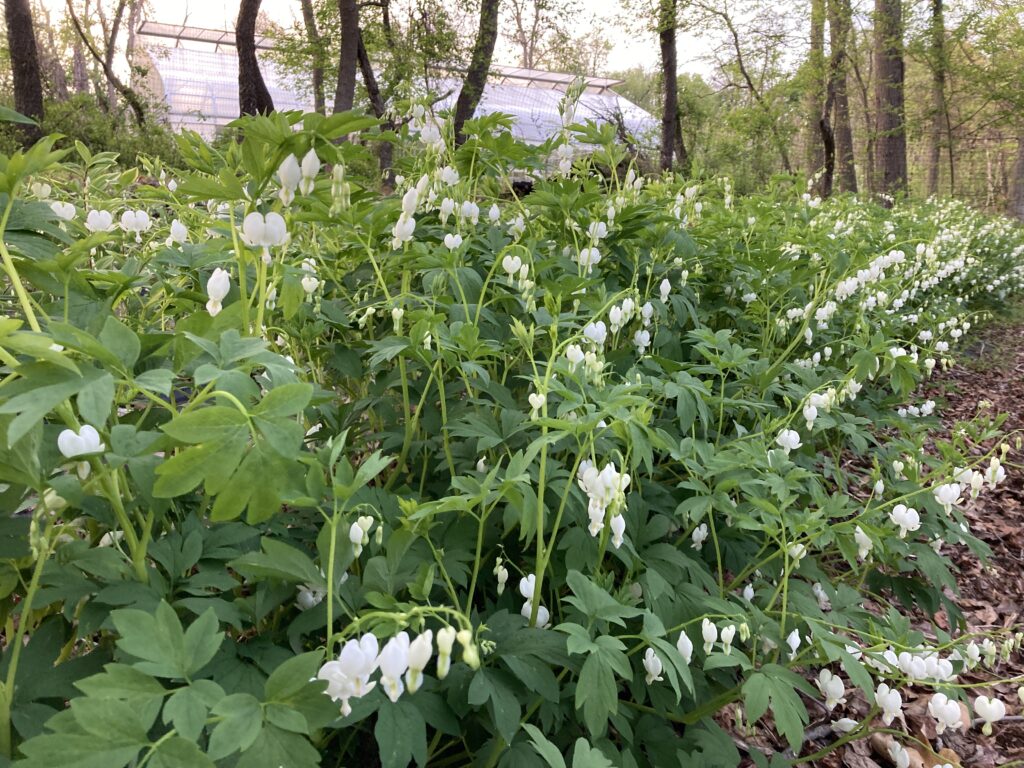
DICENTRA
Immensely ephemeral, Dicentra is with us for only about one week a year at the end of April. This woodland plant has long graceful arching stems loaded with little heart-shaped blooms. Its common name is “Bleeding Hearts”, but there’s nothing morbid about them. They come in crisp white and shades of pink. When you see them listed, be sure to buy them as they won’t be around again for another year!
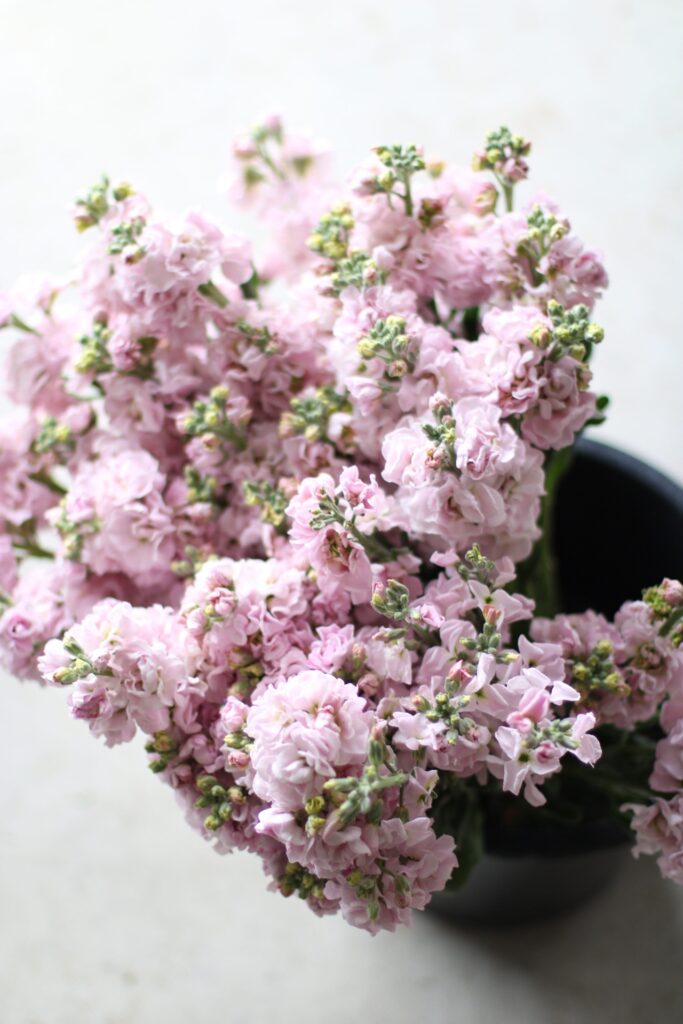
FRAGRANT STOCK
Sweetly scented with cloves, this staple in the florist trade is so much better when it is locally-grown and never forced to endure a rough ride jammed in a box. No slimy florets or wilted stems at PFG. Fun fact about stock: it is closely related to broccoli – eat the flowers (their delicious!) and you’ll immediately realize the connection. Stock is a robust shorter “line” flower that comes in a rainbow of color including white, ivory, soft yellow, peach, light pink, magenta, purple, lavender, and bordering on red.
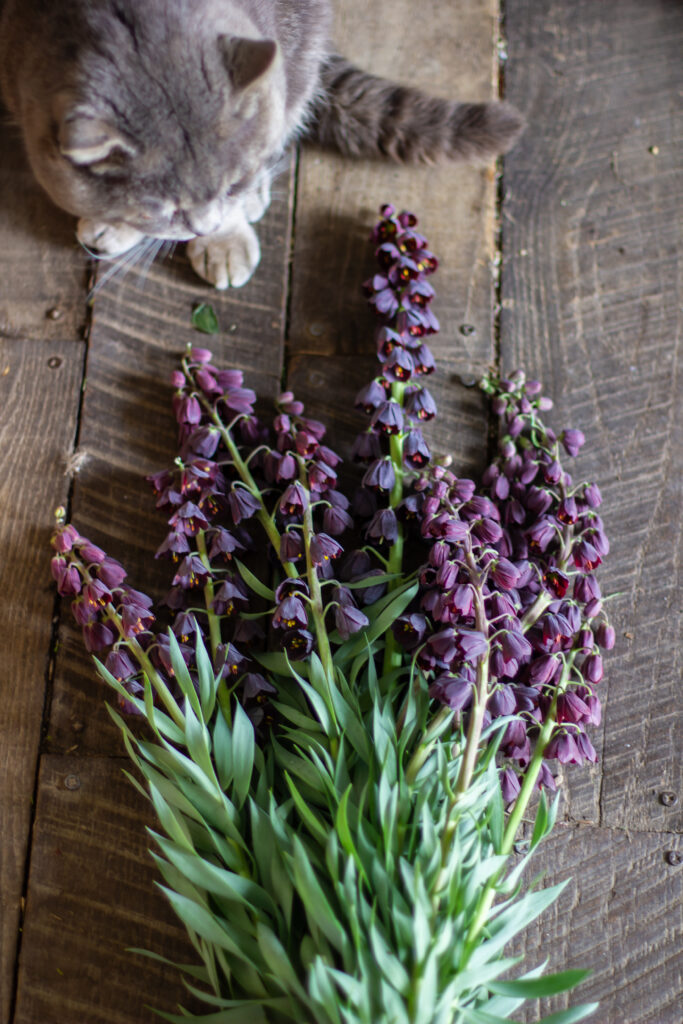
FRITILLARIA
Talk about specialty flowers! Fritillaria are incredibly unique and diverse. Within this one plant family, there are several shapes and sizes. Fritillaria persica, pictured above, is stately and outstanding for large designs. Fritillaria imperialis wears a crown of foliage above a cluster of dangling orange bells, giving it a tropical pineapple vibe. Fritillaria meleagris is diminutive with a little purple and white checker board across its petals. In short, something for everyone! Fritillaria are pricey stems because the bulbs they grow from are pricey. Our growers pay upwards of $6 per bulb for these; the price of the flowers reflects that.

GEUM
Cutie patootie alert! This diminutive darling adds a touch of whimsey to your designs. Short-stemmed, geum is best used in short vase arrangements or hand-tied bouquets. It comes in mostly citrus tones of lemon, tangerine, and orange. Only available for a brief window of time each spring so when you see it, grab it!
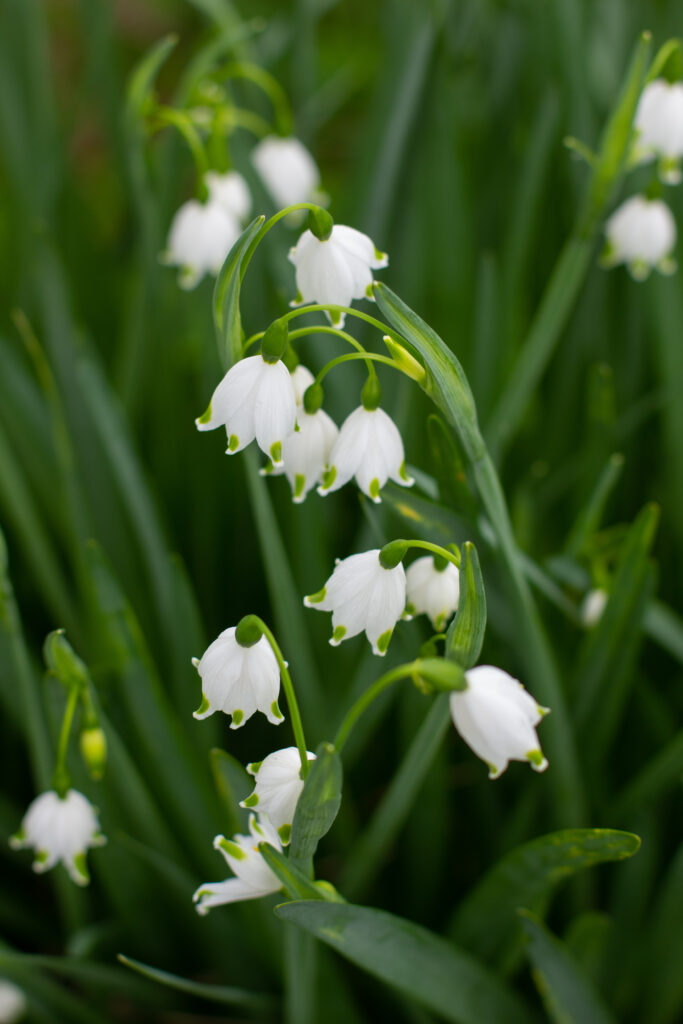
GIANT SNOWDROP
Think lily of the valley on steroids! Giant Snowdrops are graceful white bells that bloom in early spring on 12-14” stems. They sadly are not fragrant like lily of the valley but have the same romantic English garden feel and dance delightfully above larger blooms in a design. An important note about using Giant Snowdrops: they ooze a sap out of their stems that can clog up other flower stems in a shared vase. It’s best to trim Giant Snowdrops to the height you expect to use them at and then let them sit in their own bucket overnight to stop their sap flow before combining with other blooms. Alternatively, if your shop carries CVBN tablets, you could use one of those in the water to neutralize the sap.
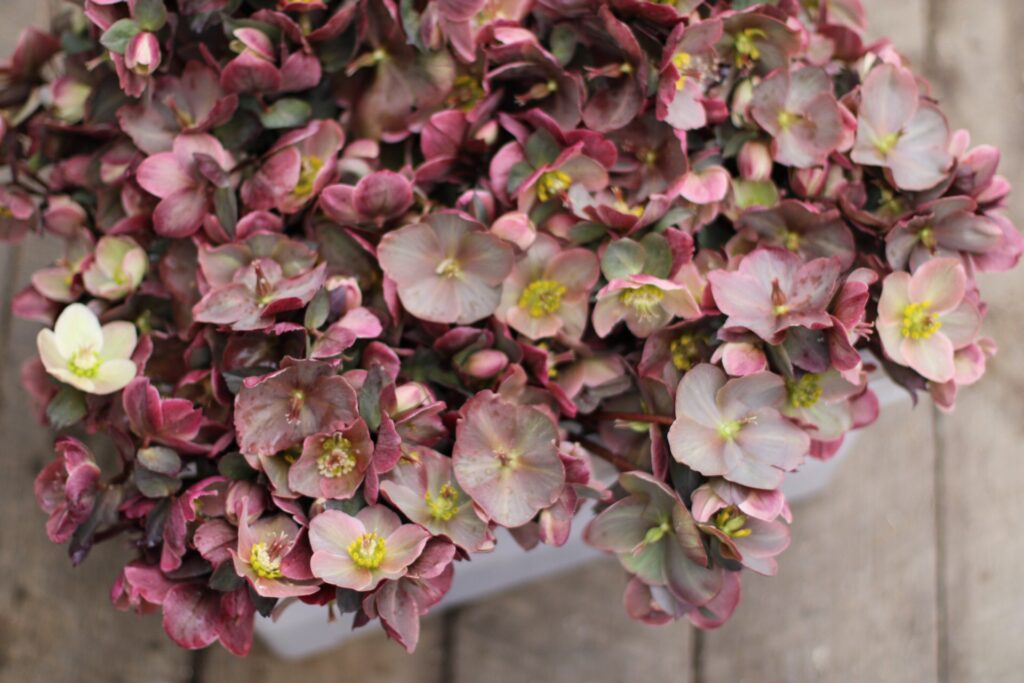
HELLEBORE
A garden favorite, hellebores have become more readily available in the floral industry in recent years with lots of new fancy varieties emerging on the scene each season. Flowers bloom while there may still be snow on the ground, usually around Lent (their common name is Lenten Rose). However, blooms need time to mature on the plant before cutting them for use in the vase. If harvested to early, they will wilt quickly. Our growers at PFG know just the right stage to harvest so you’ll get extraordinary vase life without having to do any fancy pin-pricking or slicing and dicing of stems. Hellebores come in shades of white, green, ivory, pink, and deep mauve. There are single or double flower forms.
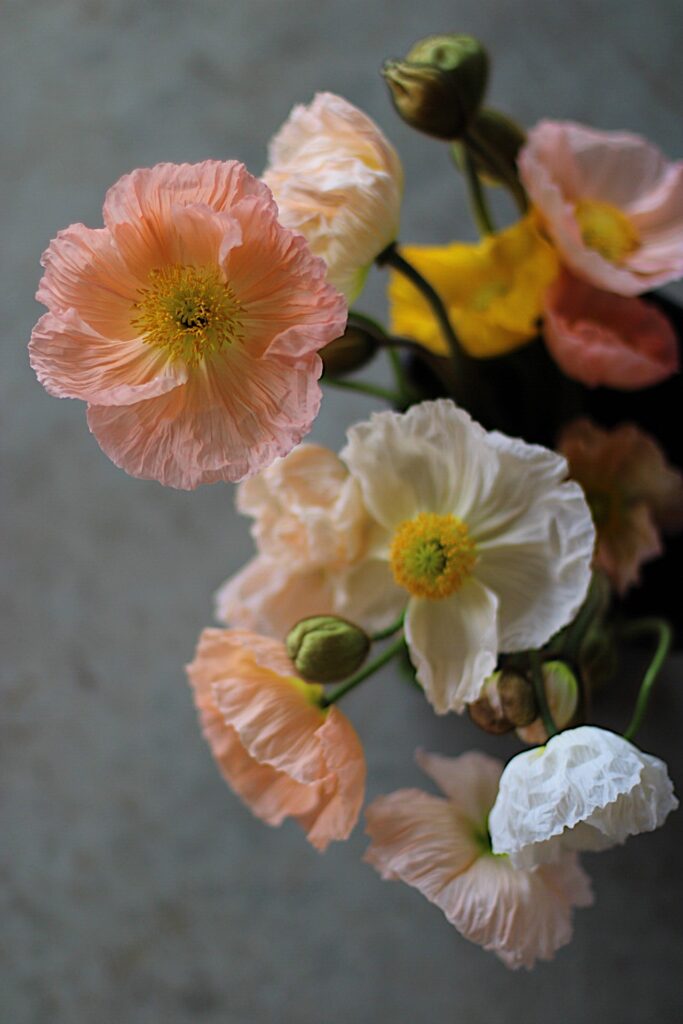
ICELANDIC POPPIES
Tissue-paper-thin and pleated petals make Icelandic poppies so darn charming. They embody the ephemeral beauty of springtime. Place them high in designs so they have plenty of room to shine when the light illuminates them. Our growers typically harvest Icelandic poppies when they are still in bud. This protects the delicate petals from getting bruised or torn before they get to you. When you’re ready to use these stems in a design, bring them out of the cooler to warm up for a few hours first. Then carefully peel away the fuzzy green outside of the bud (called a “sepal”) and the petals will unfurl quickly from there. At PFG, we sell poppies in single-color bunches so you can be sure you’re getting exactly the right color you need for your event designs!
Read more about Icelandic poppies in this blog post.
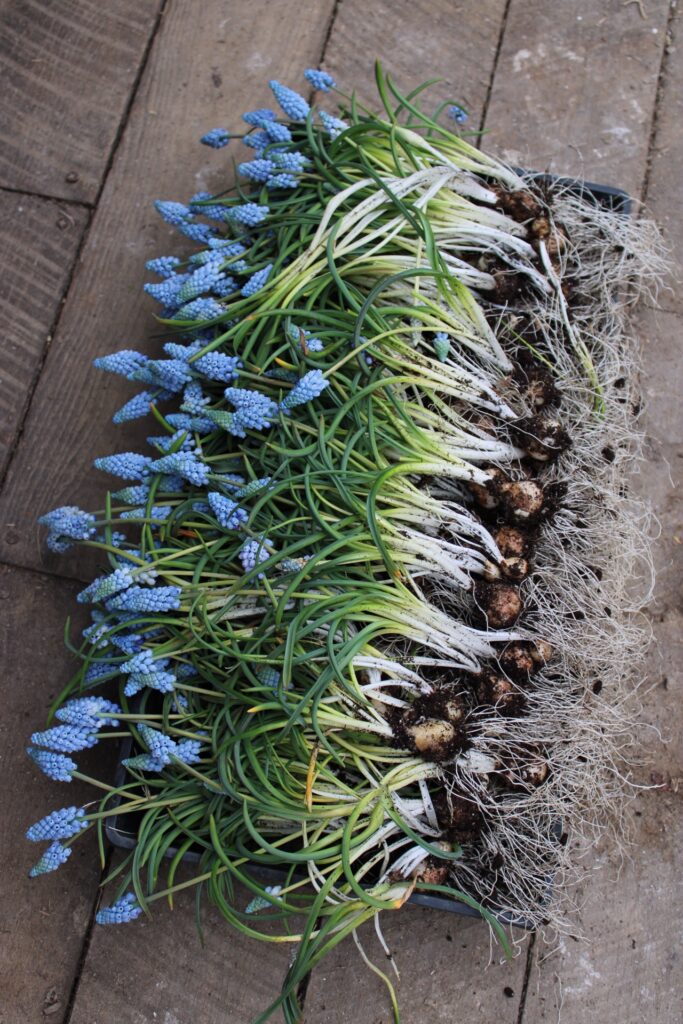
MUSCARI
Also called “grape hyacinth” because of their barely-there scent of grape, muscari is a teeny tiny stem, maybe one of the smallest you’ll ever use. Just four to five inches tall, these little friends are best used in personals like boutonnieres or hair flowers. You can also wire and tape them to create a longer stem to thread into hand-tied bouquets. If doing that, take a tiny bit of cotton ball, soak it in water, place at the base of the stem and then wire and tape from there so the muscari has a bit of moisture to soak up. Muscari, which are only “in season” for a small window each April, can be held for 2-3 weeks in the cooler and even longer if they still have their bulb attached. So, it can be worth buying them in advance of a wedding and holding on to them. Muscari come in shades of blue, white, and blush.
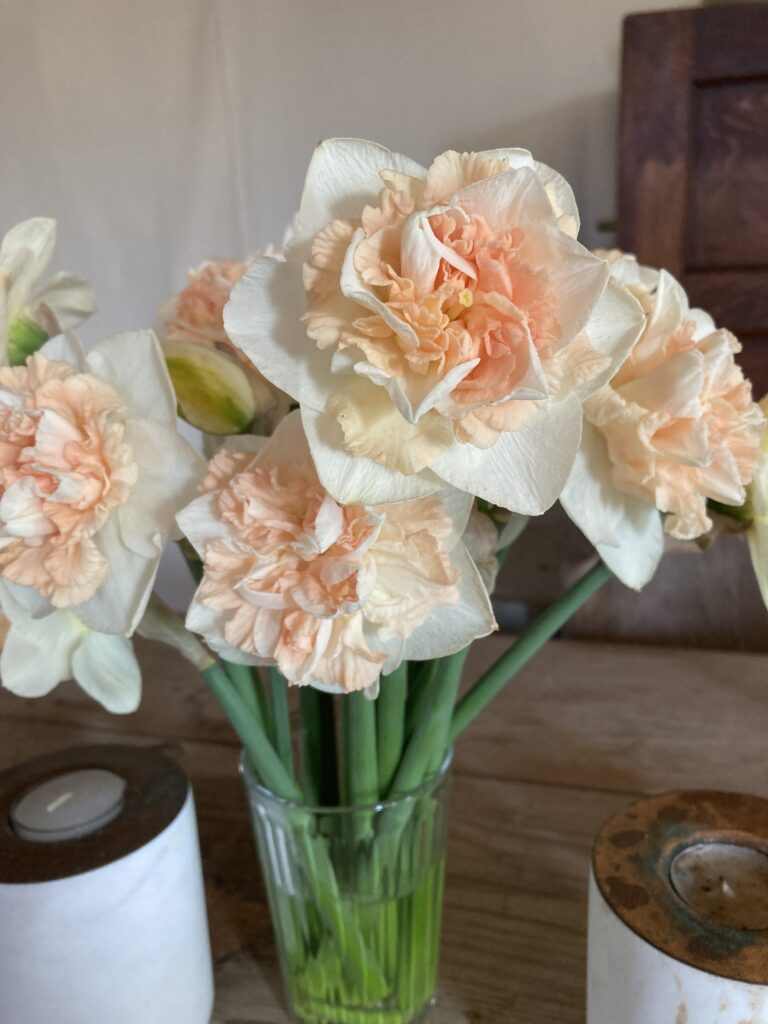
NARCISSUS
Harbingers of spring, narcissus are always the first out of the gate when it comes to locally-grown flowers in our region. You may be tempted to call them daffodils, but they’re so much more special than that. Fun fact: all narcissus are daffodils, but not all daffodils are narcissus (enjoy noodling that one for a bit). Narcisuss are typically multi-petaled and sweetly scented, adding a touch of nostalgia to any design. They come in shades of white, ivory, butter yellow, bright yellow, and salmon. Like the Giant Snowdrops listed above, they ooze a sap out of their freshly cut stems that can clog up other flowers’ stems. It’s best to trim narcissus to the height you expect to use them at and then let them sit in their own bucket or vase overnight (that’s what’s happening in the photo above) to stop their sap flow before combining with other blooms. Alternatively, if your shop carries CVBN tablets, you could use one of those in the water to neutralize the sap.
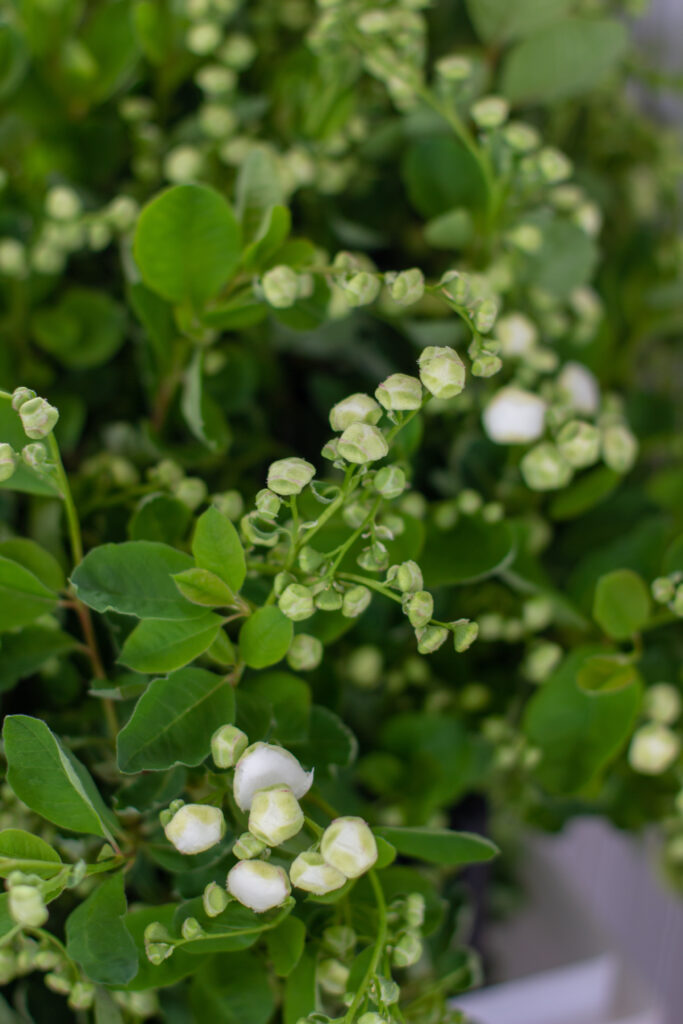
PEARL BUSH
A rarely seen flowering branch that adds elegance to a design. Best used before the flowers open because the buds look very much like pearls! Available in mid-April, this branch acts as both a foliage and a filler in early spring designs since it comes with a lovely green leaf. Once you’ve tried it, you’ll wonder how you ever designed before without it!
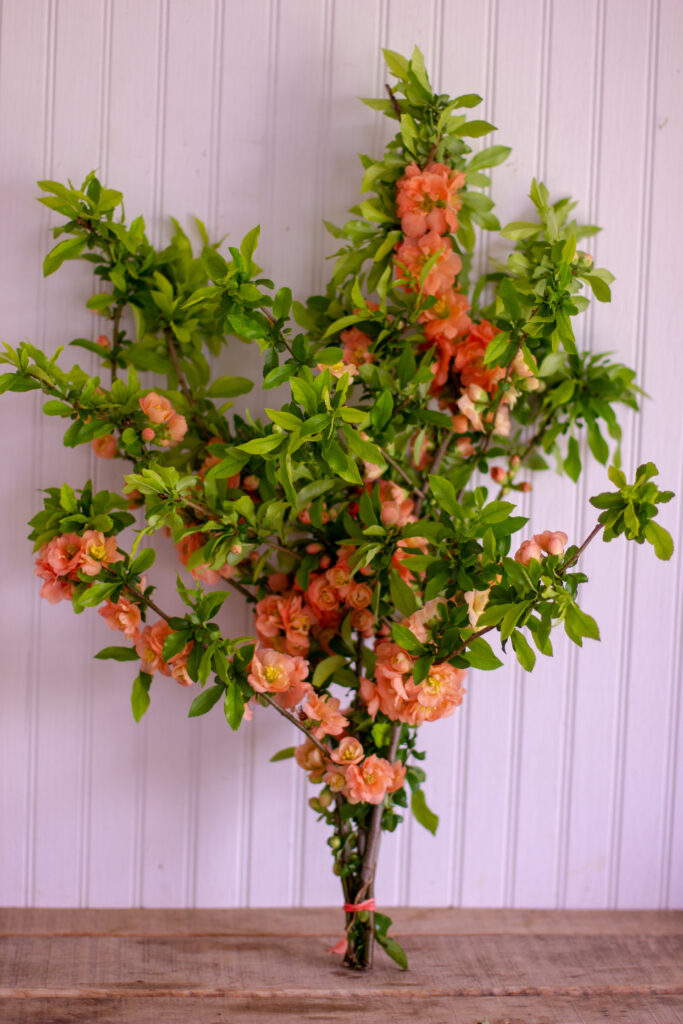
QUINCE
A classic flowering branch for spring designs. Listed on Rooted by its Latin name, Chaenomeles. Quince tends to be “chunky”, meaning it’s best to use it in larger-scale designs or resign yourself to chopping it up into lots of little bits to add to bouquets. Quince comes in shades of white, peach, coral, orange and red.
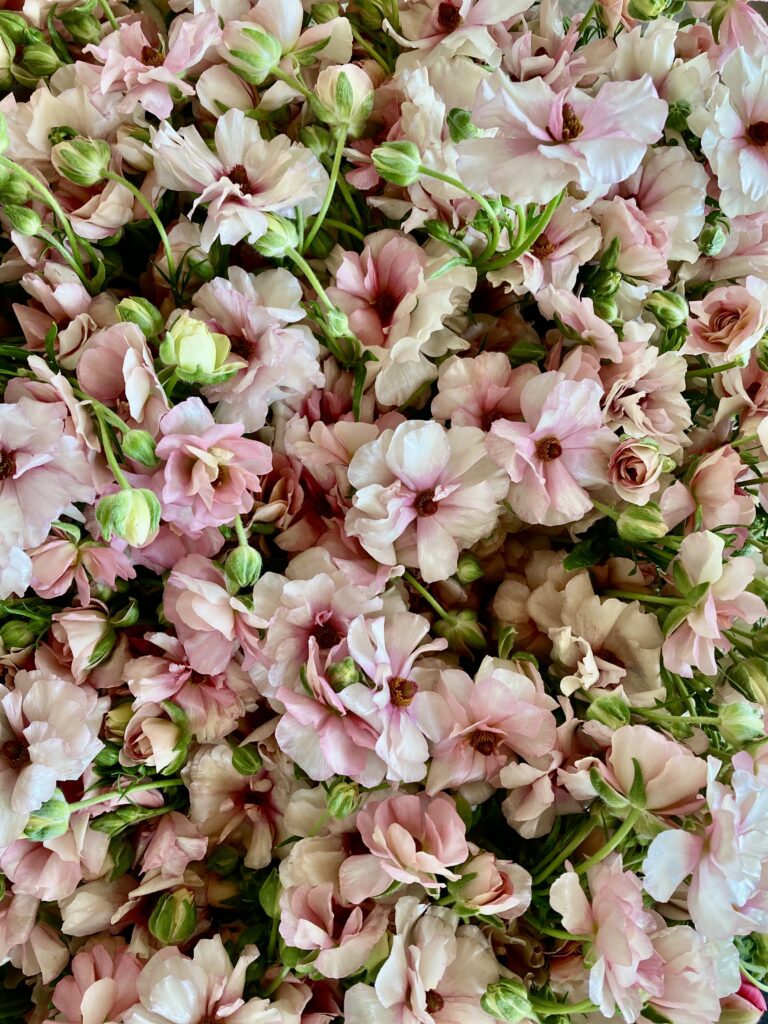
RANUNCULUS
These belles of the springtime ball need no introduction; every head turns when they enter the room. If you’ve never worked with locally-grown ranunculus, you may still be in for a surprise. She’s not a diva, but rather a workhorse! Stems are firm, heads are attached, petals are healthy and fresh. They last for ages in the cooler and vase! Can you say that about every stem you get from your traditional wholesaler? Growers at PFG are growing alllll the colors and all the varieties, including the Italian and butterfly types (pictured above). Funny fact about ranunculus: its name means “little frog”. Weird.
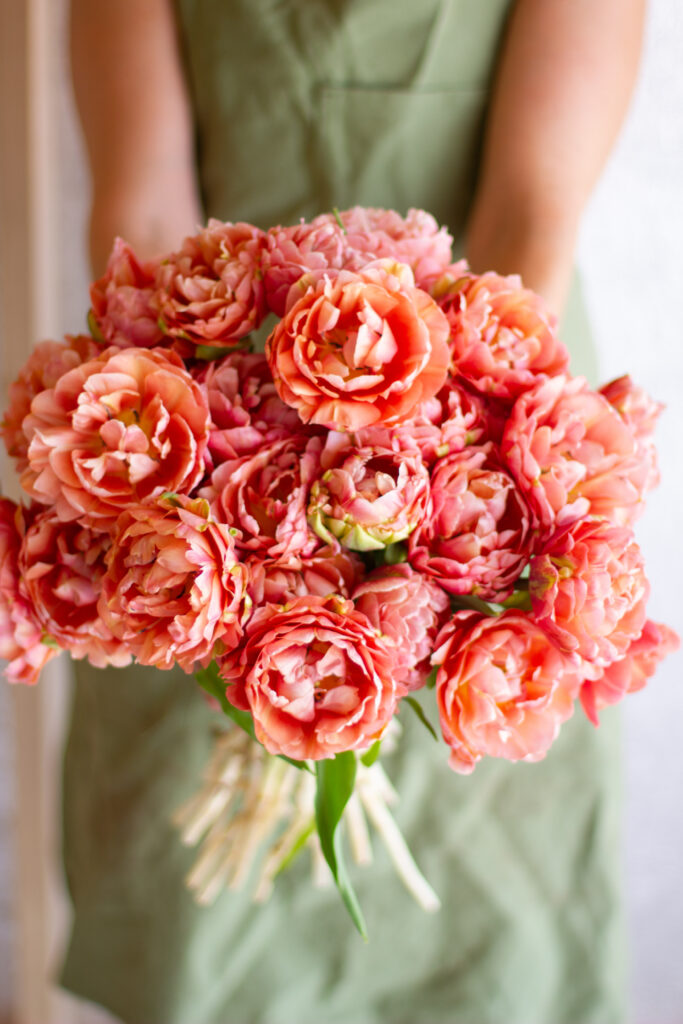
TULIP
If you thought you knew tulips, there’s a good chance you’re in for a delightful surprise with PFG tulips. Collectively, our farms are growing over 50 varieties, most of which are double forms or fringed and funky. We do NOT carry the basic, tiny tulip. Get those at the traditional wholesaler or Trader Joes. Our tulips are bodacious and bold with long sexy stems, mistaken for peonies and Dutch master paintings on the regular. They hold their own as a premium focal flower. Vase life of 7-10 days. Remember that tulips grow in the vase, so when designing, place them low and expect them to stretch a good four inches. Special note: please don’t put a pin through the stem in an attempt to keep tulips from growing in the vase. This practice does not work; rather the wound can get infected, shortening the vase life and causing the head to snap off.
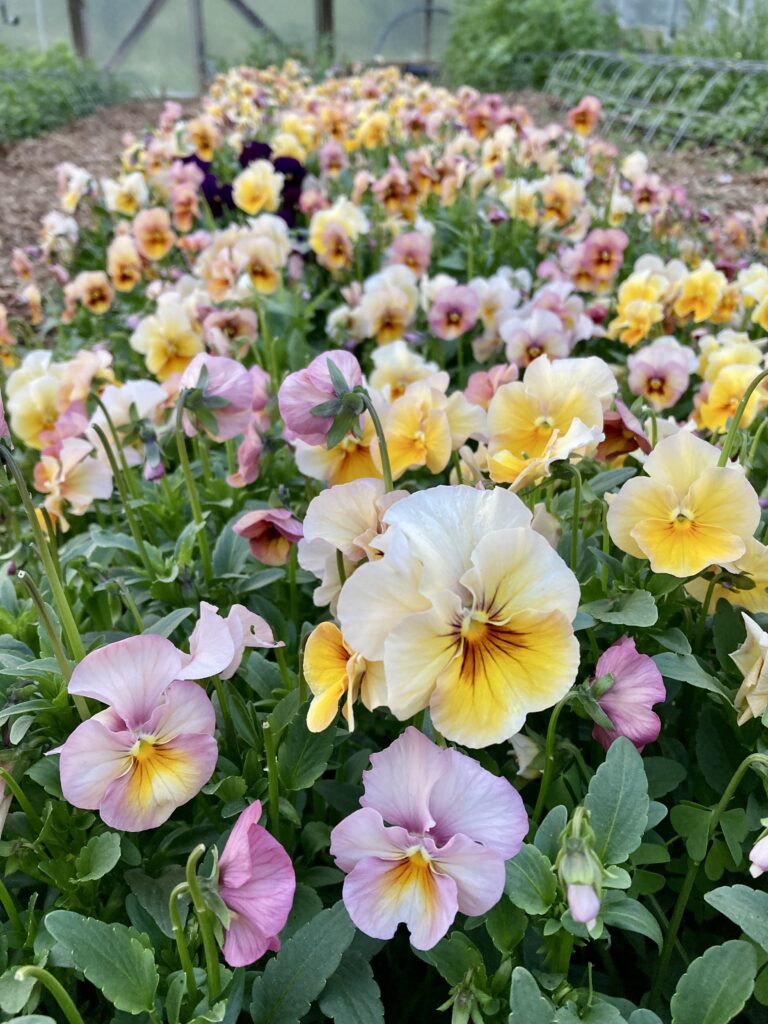
VIOLA
Pansy, johnny jump-up, or viola… call them what you want, they’re CUTE! Violas are an incredibly sweet accent in any bouquet. They are shorties, but like the muscari listed above, you can work some magic to create a false longer stem with moist cotton, wire, and tape. Fun fact: violas are also edible and have a distinct wintergreen flavor. Great as a snack while designing or as a garnish on those post-set-up-pre-break-down cocktails.
Special thanks to Jennie at Love ‘n Fresh Flowers for providing all of the photos in this Bloom Forecast.

